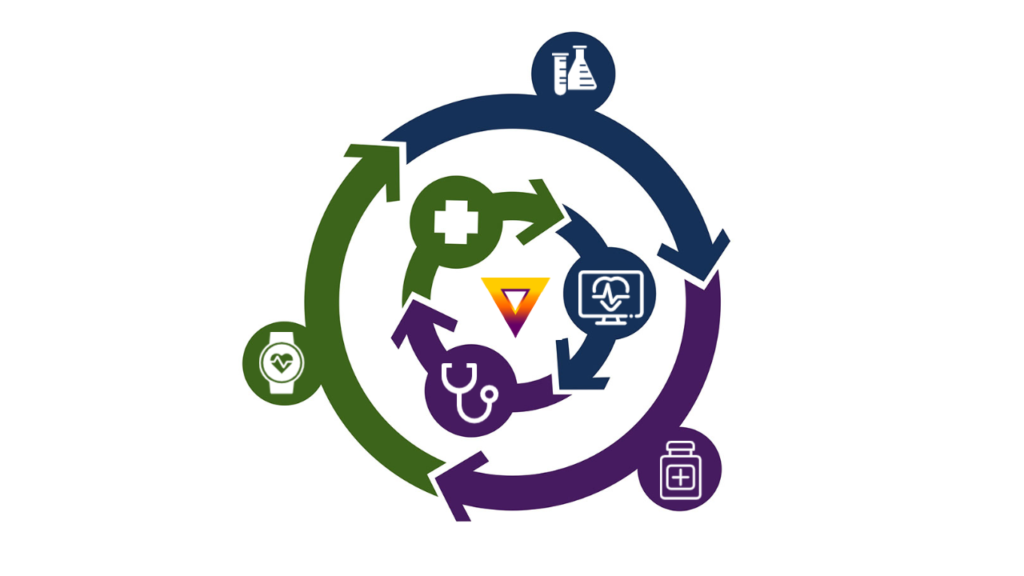
The Importance of System Interoperability on Continuum of Care
The continuum of care involves all the processes a patient takes from prevention, to consultation, to diagnosis, to post-operative care, and everything in between. Furthermore, it includes the entire process from prevention to physical care delivered by a primary care physician, medication management, and post-operative rehab. The continuum of care is a critical component of healthcare delivery, especially when patients age, change providers, institutions, or settings. Technology can provide seamless care across the continuum and help physicians increase patient loyalty and compliance rates. The interoperability of EHR systems and cloud support is providing physicians with new tools to engage patients throughout their lifetime. This improves patient care and reduces resource strain for providers.
The continuum of care is a concept that is not new, but its use in healthcare is on the rise due to an aging population. Its advantages include less stress, more convenient care, and a more social environment for patients. It also allows patients to age in place, and has been shown to help manage chronic illnesses, such as diabetes. It is a model that focuses on the entire life span of a patient and is aimed at improving quality of life and quality of care for both the patient and the caregiver.
The continuum of care is the system of healthcare that provides a continuum of services to patients with chronic conditions and can be extended to preventative care. Digital resources can help by providing tools and resources that can improve the quality of care and the coordination of care. Some of the other ways that interoperable technology can help the continuum of care include:
1. Improves communication between care providers:
Interoperable technology can help care providers communicate with each other more effectively and efficiently. This can help to improve the coordination of care and make sure that everyone is on the same page, at all times.
2. Improves patient education and engagement:
Interoperable technology can help patients better understand their condition and what they need to do to manage it. This can help to empower patients and make them more engaged in their own care.
3. Improves care coordination:
Technology can help care coordinators keep track of patients, their care plans, and the different providers involved in their care. This can help to make sure that everyone is working together to provide the best possible care.
4. Helps to reduce costs:
Technology can help to reduce the costs of care by making it more efficient. This can help to free up resources that can be used to provide care to more patients.
5. Improves equitable access to care:
Technology can help to improve access to care by making it easier for patients to find the care they need. This can help to make sure that no one falls through the cracks.
There’s Room to Improve
With the continued expansion of patient-centric care and technology that supports it, the traditional model of healthcare silos no longer works. Now, healthcare organizations can design and deploy new solutions that address the needs of various provider participants. These modern technologies are interoperable and can bring total information to the fingertips of every stakeholder, ensuring better decision-making and communication.
Furthermore, Telehealth enables virtual care and can help deliver high-quality care at scale. It can also facilitate a closer connection between care team members and patients. As a result, telehealth is increasingly being adopted by care teams, and is proving itself to be a highly effective means of interaction.
Interoperable platforms are essential to improve quality of care and reduce costs. Having a secure and accessible medical record of the patient allows all providers to collaborate and communicate. This not only facilitates the patient experience, but also saves valuable resources in administrative tasks. By improving quality of care, the platforms, such as VOLA, improve reimbursement rates and reduce the costs associated with patient care. They can also help physicians qualify for better reimbursement rates from value-based incentive programs.
Digital technologies, such as VOLA’s Platform are also driving the expansion of the continuum of care. They enable providers to get a better understanding of a patient’s health and life, and they expand visibility and access outside the clinical environment.
VOLA knows interoperability
The Continuum of Care is a comprehensive model that spans health services and supports prevention and early detection. Through this model, patients can avoid costly medical expenses, combat symptoms, and embrace preventive care. As the care continuum becomes increasingly digital, healthcare providers and insurers can use technology to guide the patient throughout the continuum. Whether it’s a patient’s health plan or their personal health data, digital interoperability will improve the care continuum.
Interoperable tech can play a vital role in improving the continuum of care. By providing tools and resources that can help to improve communication, patient education and engagement, care coordination, and access to care, technology can help to make sure that everyone gets the care they need.
Our software solutions are developed in-house by our team after a full deep dive into your business and operational needs. By using a VOLA, your organization can focus on core competencies rather than spending precious resources on developing bespoke software. Additionally, our solutions allow you to collaborate across different locations and disciplines by automating tasks and reducing the risk of human error. Our solutions can be tailored to the your workflow and help patients and customers achieve high-quality results without the hassle of managing solutions.
Interested in a demo to see our platform can be optimized for your laboratory needs? Contact us to schedule a demo with the VOLA team today!
Or simply enter your information here:
About VOLA
Our mission is to support the rapidly growing digital transformation of the healthcare industry. We do this by equipping medical offices and telehealth providers with customizable and affordable technology. One of our key differentiators is our ability to connect laboratory tests into the workflow of telehealth services. Additionally, we have a dedicated SaaS product line to support laboratories and laboratory marketing organizations.

